Understanding Feline Asthma and Breathing Difficulties

Feline asthma is a chronic disease, as in humans, that could eventually affect the breathing of your poor kitty.
Should your kitty wheeze or suffer from uncontrollable coughing fits, it could be much more than just a mere passing problem but rather a result of feline asthma.
This disorder can range from mild to severe, and in such cases, it could become life-threatening if left unattended.
We are going to delve deep into what feline asthma is, the causes that trigger it, its diagnosis, and the most efficient ways of managing and preventing it.
By the end, you’ll feel more prepared to help your cat breathe freely and comfortably.
Table of Contents
What is Feline Asthma, and How Does It Affect Cats?
Feline asthma is an inflammatory disease targeting the lower airways of a cat, mainly those that include the bronchi and bronchioles.
When your cat inhales irritants such as dust, pollen, or smoke, this can lead to inflammation and constriction of the airways.
This inflammation results in labored breathing and can precipitate episodes of wheezing, coughing, and sometimes rapid breathing or open-mouth breathing in extreme cases.
Feline asthma is thought to affect approximately 1-5% of cats, though it may be underdiagnosed in some cases.
Similar to asthma in other species, feline asthma tends to occur in episodes.
The symptoms are more pronounced during such periods, and these flare-ups might be triggered by environmental changes, allergens, or even stressors.
So how do you tell if your cat may have asthma?
The symptoms can be subtle at first but can become progressively worse over time.
Common symptoms include:
- Coughing or hacking, sometimes mistaken for trying to cough up a hairball
- Wheezing, particularly when exhaling
- Open-mouth breathing, which is a sign of a more severe episode
- Rapid or labored breathing
- Episodes of lethargy or unwillingness to move around
If you recognize your cat showing any of these symptoms, it is very important to contact your veterinarian.
Without treatment, feline asthma can result in extreme respiratory distress for your cat.
Feline asthma is a multifactorial disease with both genetic and environmental bases.
While some cats are genetically predisposed to asthma, others may develop it through chronic exposure to irritants in their environment.
Whatever the case may be, early recognition of symptoms and seeking medical help can help prevent asthma from seriously affecting your cat’s quality of life.
Feline asthma is an inflammatory condition affecting a cat’s respiratory system. It leads to breathing difficulties, wheezing, and coughing, which can become severe if left untreated. Early diagnosis is crucial to improving a cat’s quality of life.

Identifying Triggers and Risk Factors of Feline Asthma
Feline asthma is often triggered by a combination of several environmental and internal factors.
Understanding these triggers becomes important in preventing flare-ups and maintaining your cat’s health.
While some triggers are avoidable, others may need to be managed on an ongoing basis.
Let us take a closer look at some common triggers and risk factors which may be contributing to your cat’s episodes of feline asthma.

Environmental Allergens
Other common triggers of feline asthma include environmental allergens.
These allergens, which include dust mites, mold, pollen, and cigarette smoke, may irritate your cat’s airways, leading to inflammation and difficulty breathing.
Regular cleaning of your house may decrease the risk of an asthma attack by reducing the amount of these allergens your cat encounters.
If your cat’s symptoms are significantly worse following contact with particular environments, consider an allergen test that can pinpoint specific irritants.

Genetic Predisposition
Some cats could be born with a predisposition due to genetics.
Some breeds, like Siamese cats and Oriental shorthairs, may be more likely to develop feline asthma than others.
If your cat is from such breeds, you should be especially vigilant regarding their health and aware of the possibility of asthma.
However, this does not mean that mixed breeds cannot develop asthma, so you should not rule out this possibility based exclusively on breed consideration.

Seasonal Triggers in Asthma
Like human asthma patients, cats are vulnerable to seasonal changes, which may aggravate the disease.
The seasons of spring and summer, when the pollen count is high, tend to be particularly difficult for cats with feline asthma.
During these months, your home should be as free from allergens as possible.
Use air purifiers, and keep windows closed on days when pollen levels are elevated.
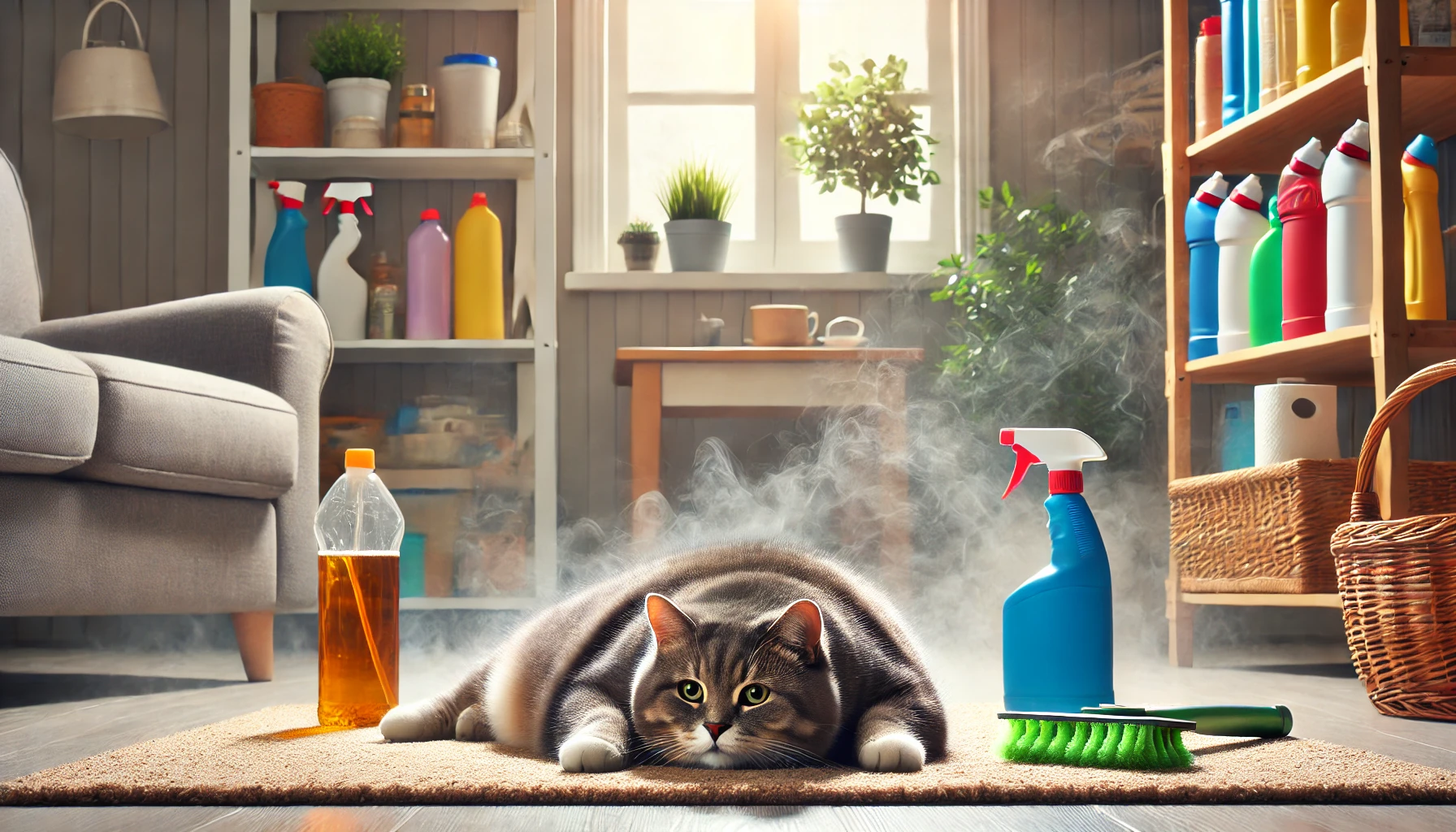
Other Common Risk Factors
Other risk factors contributing to feline asthma can include, besides allergens and genetics:
- Obesity: Obesity puts additional strain on the cat’s respiratory system.
- Stress: Stress can trigger or worsen an asthma attack.
- Respiratory infections: Infections make a cat more susceptible to asthma flare-ups.
- Household cleaning products: Aerosol sprays and strong-smelling chemicals can irritate your cat’s airways.
Identifying and managing these triggers can help lessen the frequency and severity of the asthma episodes your cat experiences.
Always monitor for new or worsening symptoms, and consult your veterinarian to develop an individual plan for minimizing feline asthma triggers.
Environmental allergens and genetic predispositions play a significant role in triggering feline asthma. Identifying these triggers early helps in preventing severe asthma episodes and managing the condition effectively.
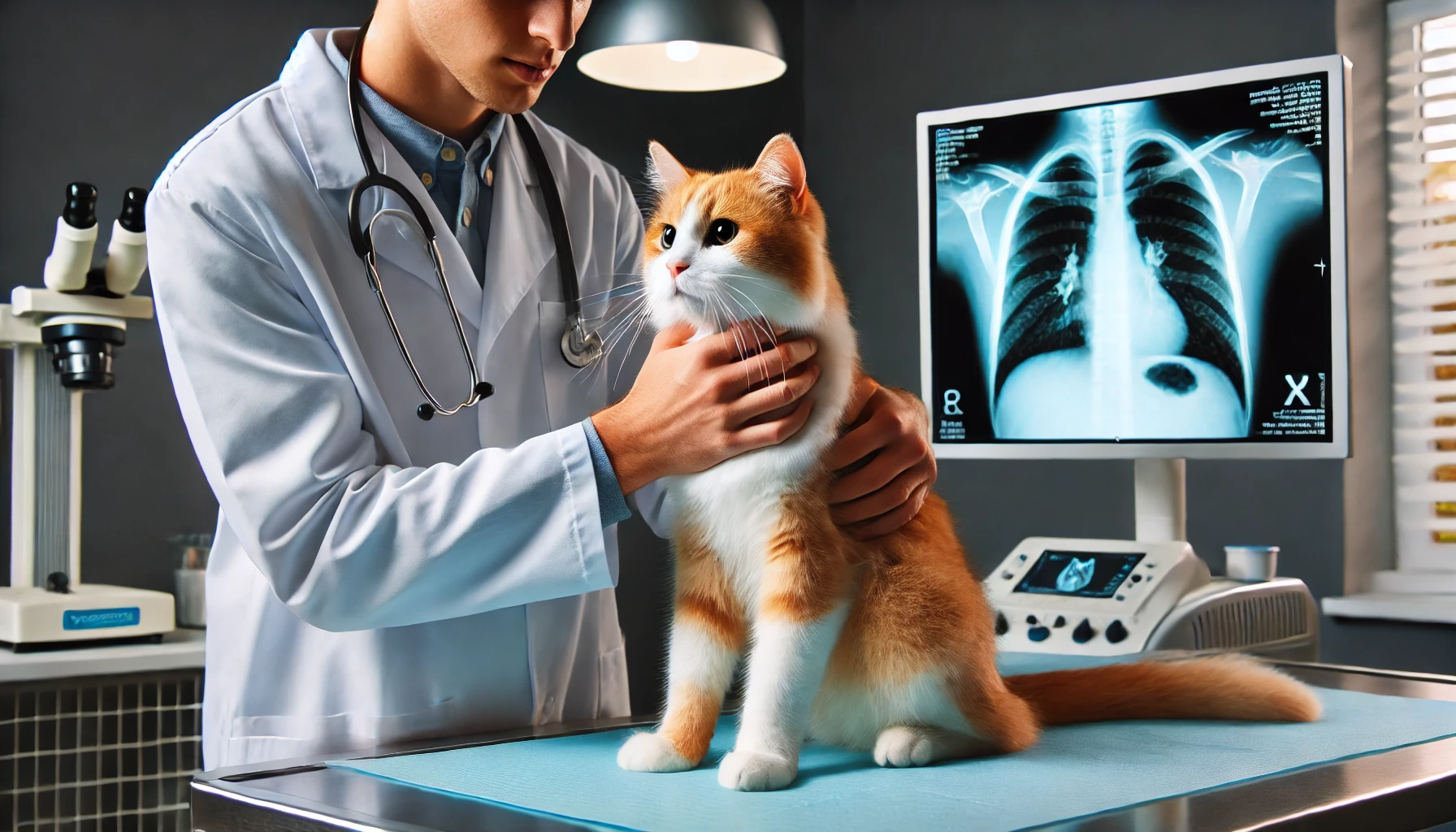
Tests and Procedures for Diagnosing Feline Asthma
Diagnosis of feline asthma often involves a suite of clinical observations, diagnostic imaging, and specialized tests.
Proper diagnosis is important since many symptoms of asthma are nonspecific and can be easily confused with other conditions like bronchitis, heart disease, or respiratory infections.
Let’s take a closer look at how your veterinarian might confirm an asthma diagnosis in your cat.

Clinical Examination
The diagnosis of feline asthma typically starts with a very thorough clinical examination.
Your veterinarian will examine the respiration, pulse, and general condition of your cat.
They will ask you to describe the history of your cat’s symptoms, such as the frequency of bouts of coughing or wheezing, any known triggers that may lead to episodes, and the normal environment in which your cat lives.
The veterinarian will also look for signs of respiratory distress such as labored breathing or open-mouth breathing.
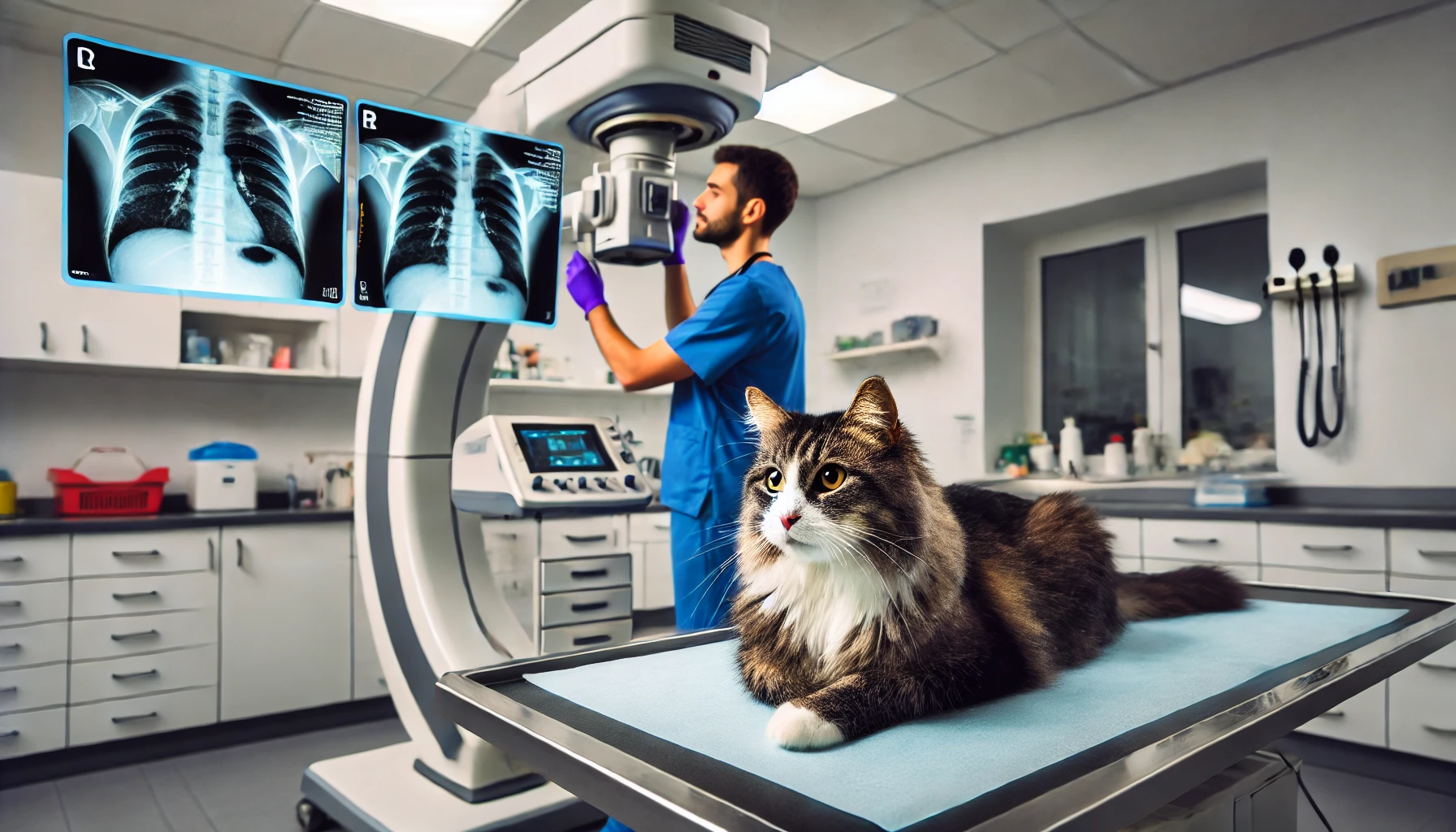
Chest X-Rays and Imaging
Because of the commonly experienced symptoms, one of the most prevalent diagnostic tools that veterinarians use is a chest X-ray.
A chest X-ray may show airway thickening or over-inflation of the lungs, both of which are common in feline asthma.
In certain cases, other imaging tests such as ultrasounds or CT scans may be required to provide a clearer view of your cat’s lungs and airways.
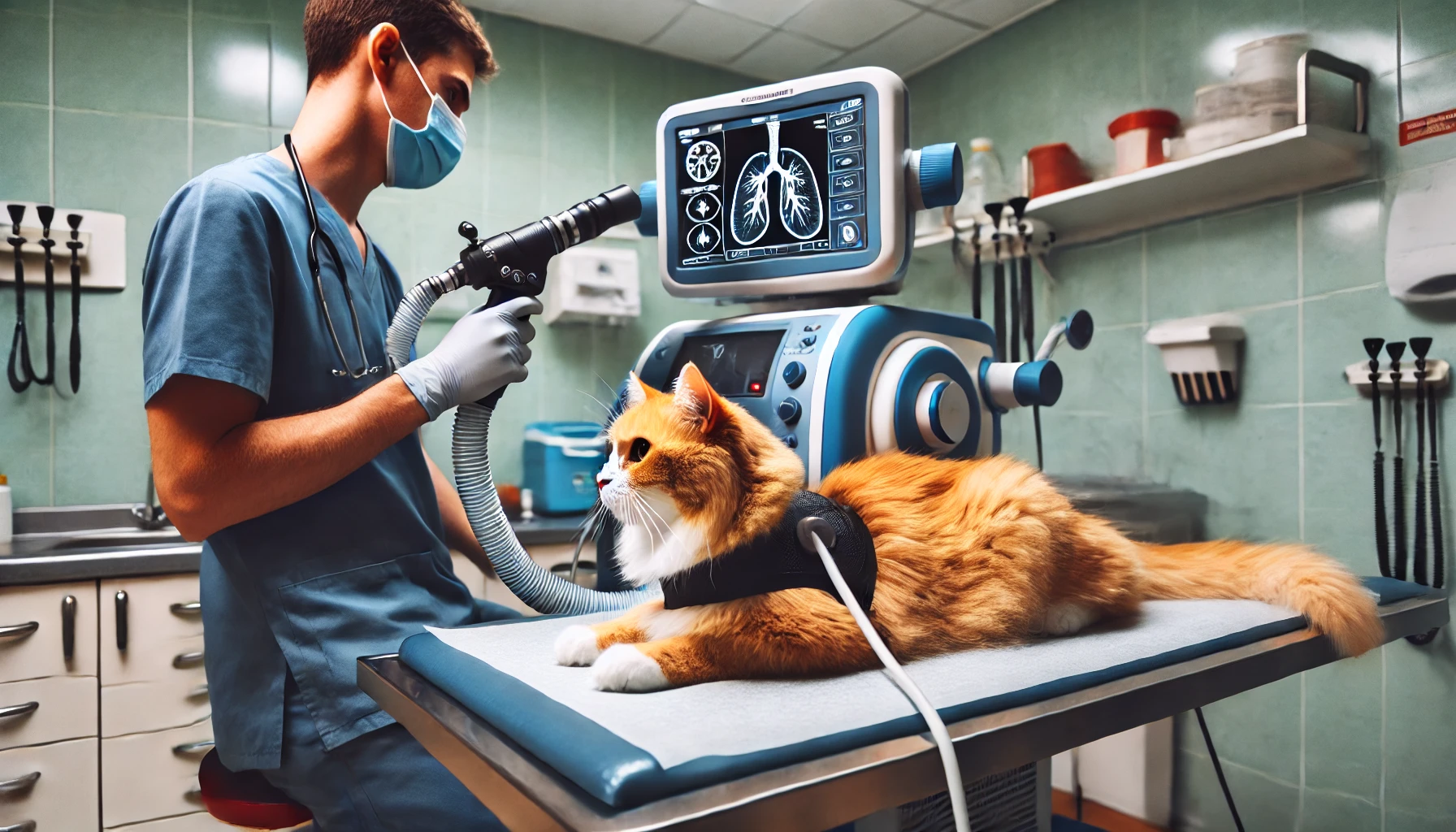
Bronchoscopy and Lung Function Tests
Bronchoscopy can be performed to have a more thorough examination of your cat’s airways.
This involves inserting a small camera into the airways, providing a clear view of all the bronchial tubes and showing any inflammation or obstruction.
Together with bronchoscopy, lung function tests may also be carried out to determine how well your cat’s lungs are functioning.
These tests confirm whether the respiratory problems are caused by feline asthma or another illness.
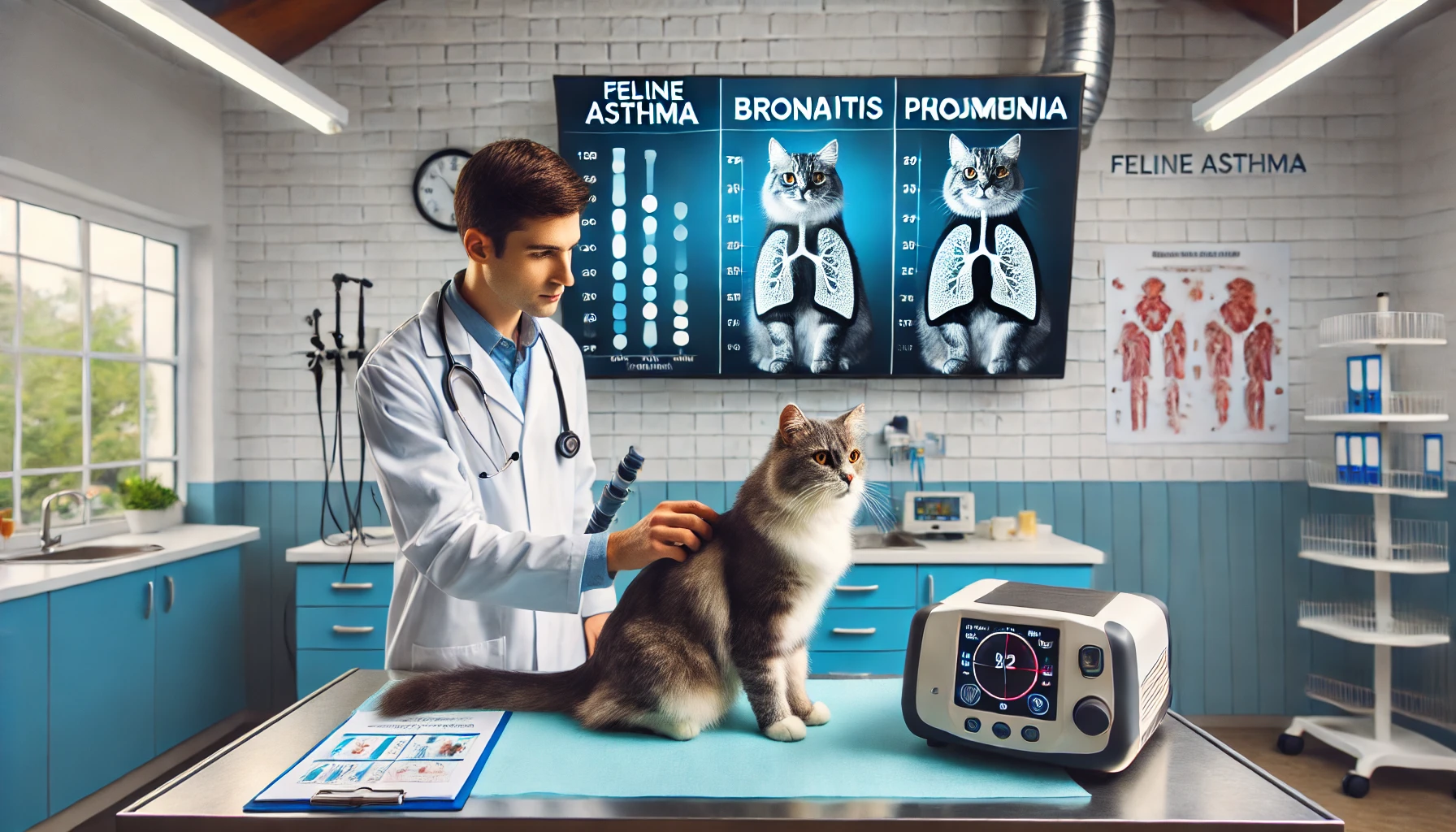
Distinguishing Feline Asthma from Other Conditions
It is crucial to distinguish feline asthma from other conditions that produce similar symptoms, such as pneumonia, heart disease, or upper respiratory infections.
Blood tests, fecal tests, and even allergy tests can be recommended to rule out infections or parasites that might also contribute to the symptoms.
This ensures that asthma is properly diagnosed for the best treatment strategy.
Once your vet has carried out these tests and procedures, they will work with you to create a treatment plan that takes your cat’s specific needs into consideration.
Proper diagnosis is the first step toward managing feline asthma and improving your cat’s quality of life.
Veterinarians use clinical exams, chest X-rays, bronchoscopy, and other diagnostic tests to confirm feline asthma. Proper diagnosis ensures that asthma is managed effectively through tailored treatment plans.
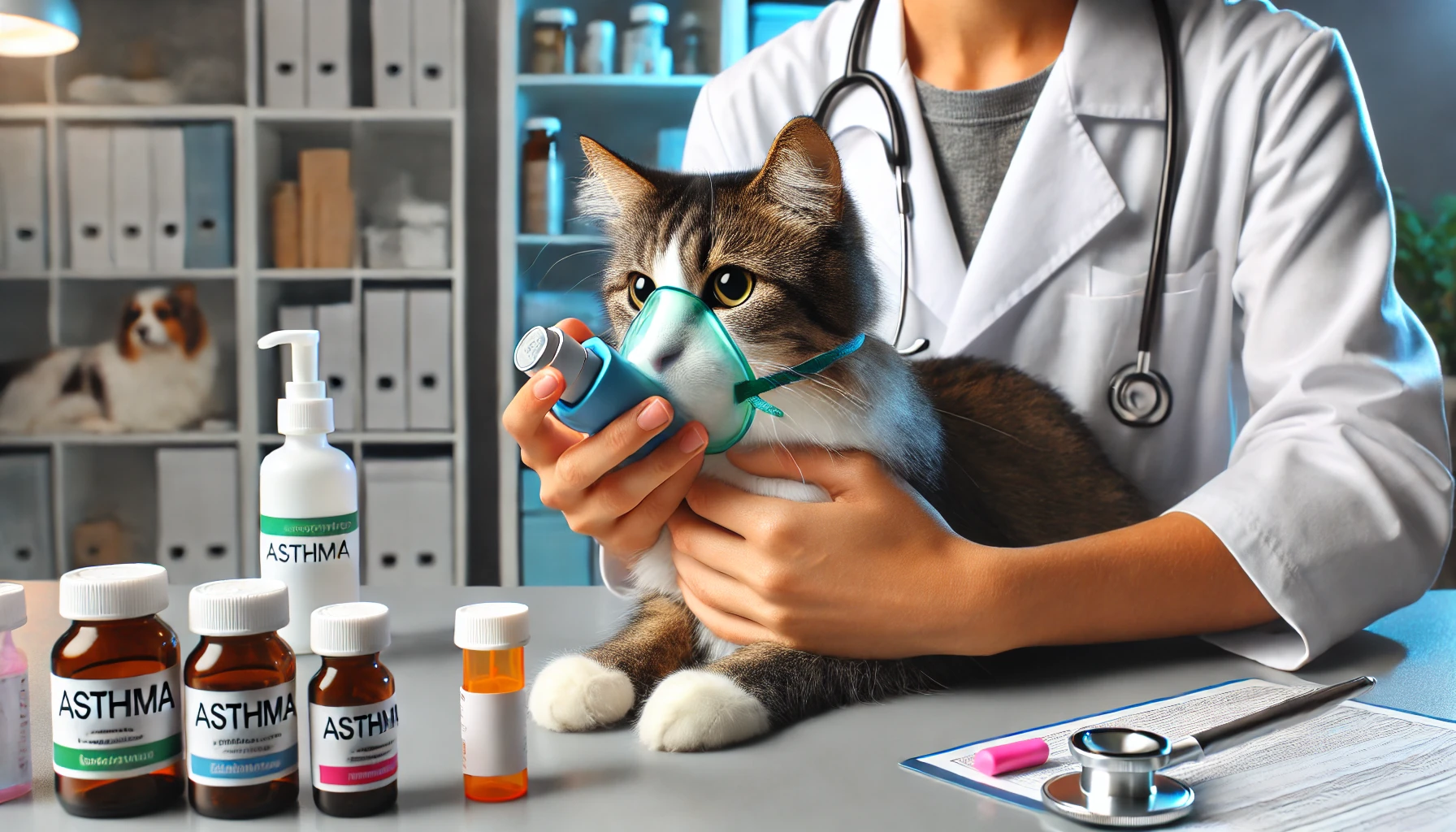
Treatment Options for Managing Feline Asthma
Management of feline asthma is done through the use of a range of medications in addition to lifestyle changes and prevention.
Since asthma is a chronic condition, treatments are meant to reduce both the frequency and intensity of attacks, rather than completely curing the ailment.
Let’s discuss some of the most effective treatment options available to help your cat breathe more easily.
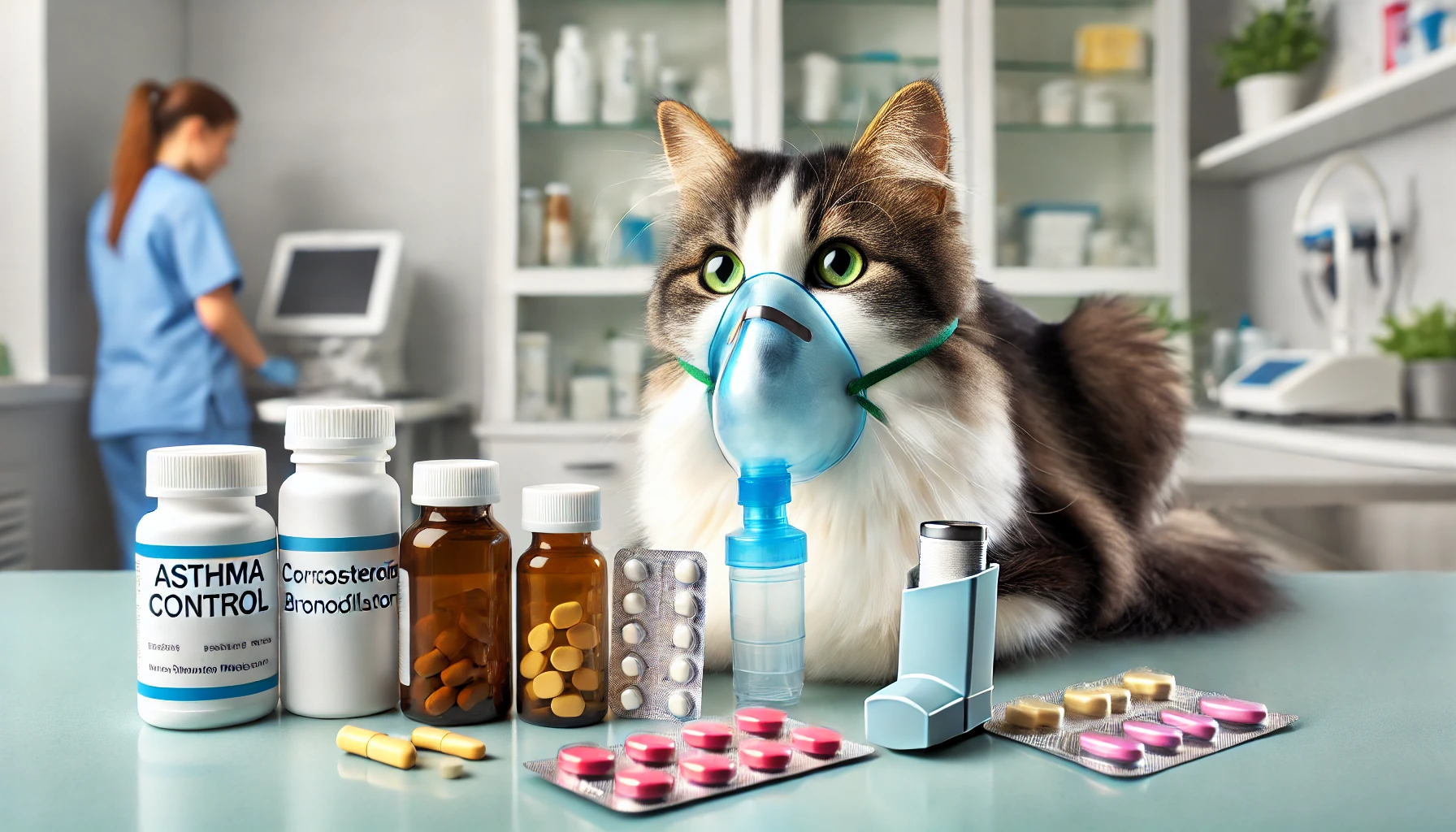
Asthma Control Medications
Treatment often involves medication.
Generally, two major categories of medications are prescribed for controlling feline asthma in cats, including:
- Corticosteroids: These anti-inflammatory drugs reduce swelling and inflammation in the airways, allowing your cat to breathe more easily. Corticosteroids may be given as a pill, through injections, or with an inhaler.
- Bronchodilators: These medications relax the muscles around the airways, making it easier for your cat to breathe during an asthma attack. Bronchodilators are usually used as rescue medications during a sudden asthma attack and are administered via an inhaler.
Medications like corticosteroids and bronchodilators are often used together to treat asthma.
Dosage and formulation are best determined by your veterinarian based on the severity of the condition and your cat’s response to treatment.
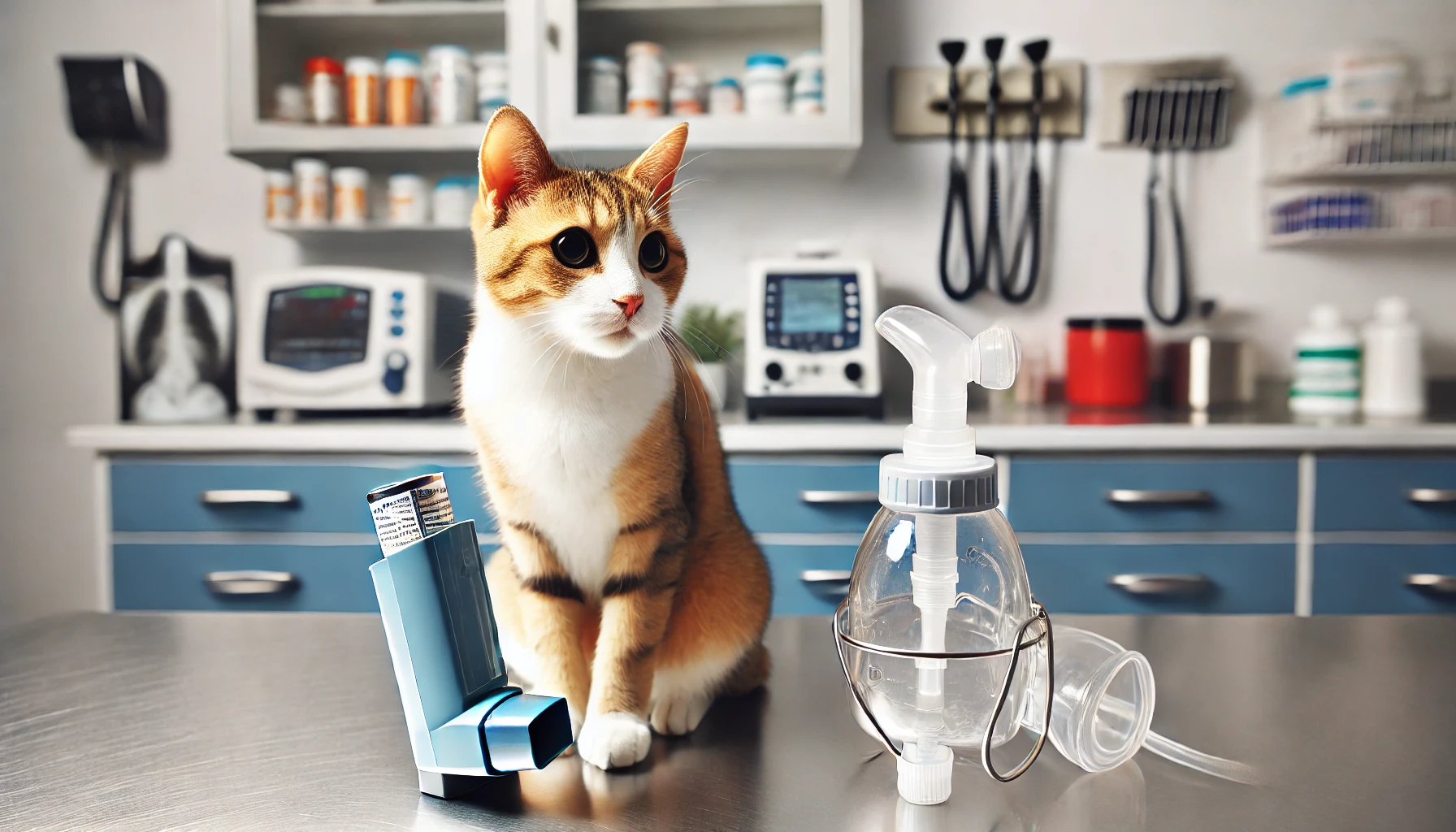
Asthma Inhalers and Nebulizers
Most asthma medications are delivered directly into your cat’s lungs via inhalers and nebulizers.
Inhalers are generally more convenient and better suited for long-term management.
They can be equipped with a spacer and mask adapted for cats.
Nebulizers are typically used for more serious cases or when your cat is unable to use an inhaler.
These devices enable medication to be administered as a mist, making the treatment easier for your cat.
Using an inhaler may seem intimidating at first, but most cats become comfortable with the process over time and with practice.
The key is to work closely with your veterinarian until the proper use and dosage are achieved.
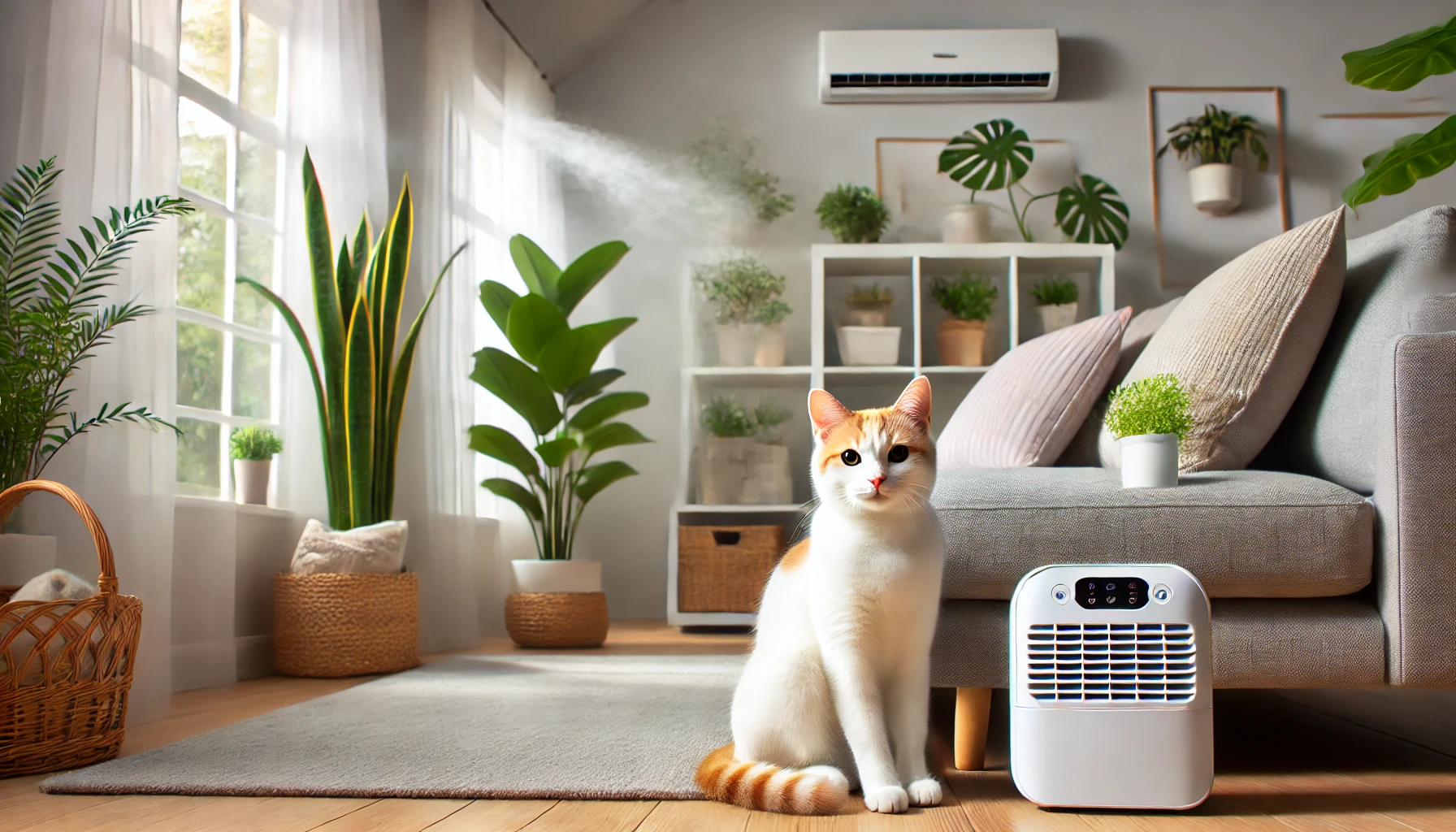
Long-Term Management Strategies
Aside from medication, long-term management of feline asthma involves making modifications to your cat’s environment and lifestyle.
Here are some important strategies to help minimize asthma flare-ups:
- Minimize exposure to allergens: Avoid exposing your cat to known asthma triggers such as dust, cigarette smoke, pollen, and household cleaning agents. Clean and vacuum your home regularly to remove allergens.
- Maintain a healthy weight: Obesity aggravates asthma symptoms, placing additional stress on the respiratory system. Keep your cat fit through a healthy diet and regular exercise.
- Monitor stress levels: Stress can trigger or worsen asthma attacks in cats. Provide your cat with a quiet, secure space, and minimize stressors such as loud noise, new people, or changes in routine.
By implementing these lifestyle changes, you can help reduce both the frequency and severity of asthma attacks in your cat.
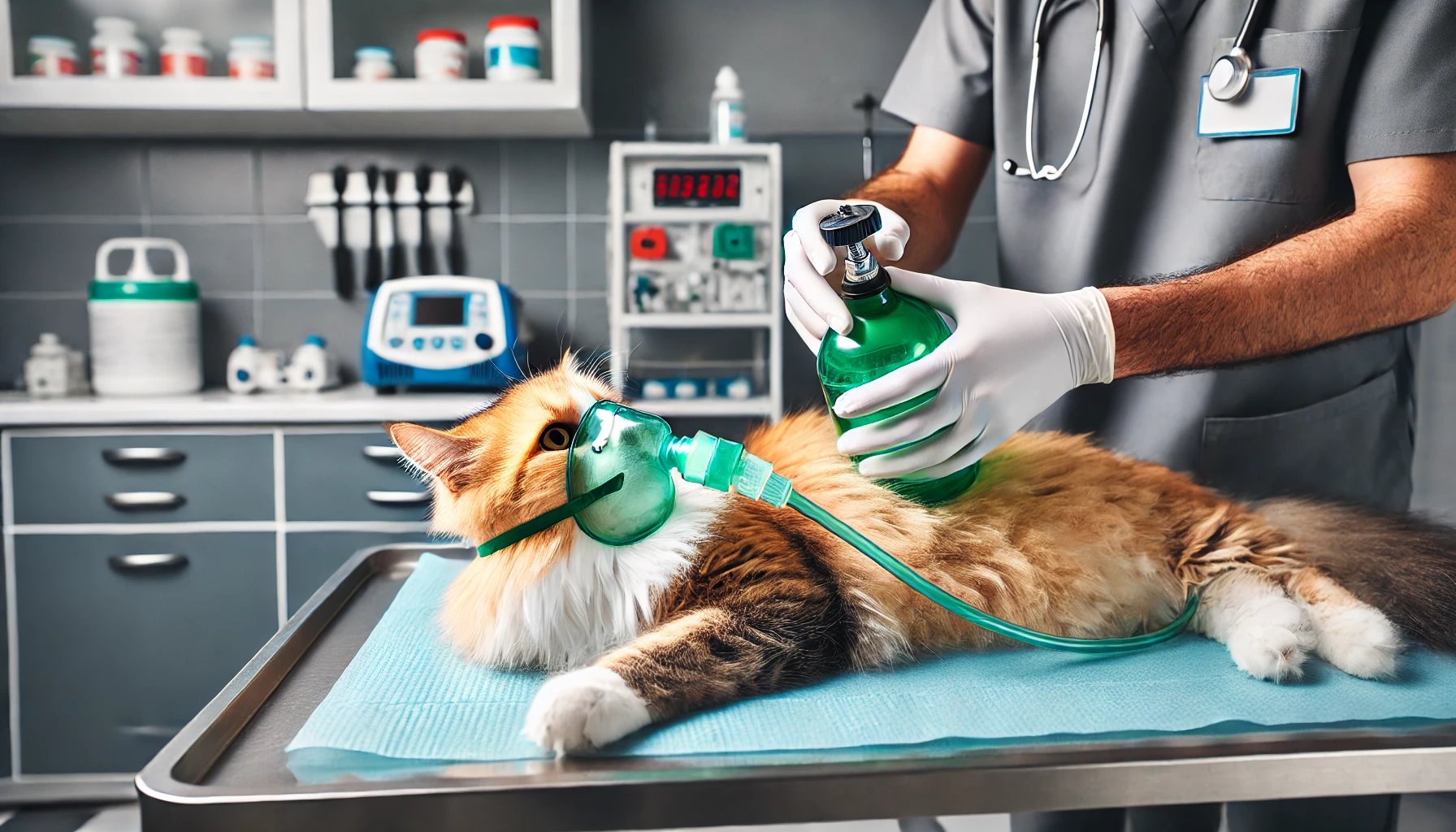
Emergency Treatments for Severe Attacks
In severe cases of asthma attacks, emergency treatment may be required.
If your cat is experiencing extreme difficulty breathing, immediate veterinary attention is necessary.
Your vet may use oxygen therapy to ease your cat’s breathing or administer higher doses of medication to reduce swelling of the airways and quickly open them.
Bronchodilators and corticosteroids are often given in higher dosages during an emergency to stabilize the cat.
Having an emergency plan in place with your veterinarian is crucial if your cat has asthma and is prone to severe episodes.
Managing feline asthma takes time and patience, but with the right combination of medications, environmental changes, and emergency care, you can significantly improve your cat’s quality of life.
Medications like corticosteroids and bronchodilators, combined with inhalers, are key to controlling feline asthma. Long-term management strategies, such as environmental changes, also play a role in reducing asthma attacks.

Preventative Measures and Lifestyle Changes for Asthmatic Cats
The most common preventive measures against asthma flare-ups in cats include making key lifestyle modifications that aim at reducing your pet’s exposure to irritants.
As feline asthma is a chronic condition, the primary aspect of maintaining a healthy living environment for your cat is to reduce exposure to possible irritants.
Let’s review some of the best preventive measures and lifestyle modifications you can implement to help your kitty live a healthier and more comfortable life.

Reducing Environmental Triggers
One of the best approaches to preventing asthma attacks is by limiting your cat’s exposure to common environmental triggers like allergens, dust, pollen, mold, or cigarette smoke.
You can reduce exposure by doing the following:
- Clean your house regularly and vacuum frequently to reduce dust and other allergens. A vacuum cleaner fitted with a HEPA filter can be particularly effective in picking up minute particles.
- Avoid smoking indoors or near your cat, as cigarette smoke is a well-known irritant that can trigger asthma attacks in a cat.
- Use air purifiers with HEPA filters to improve air quality, especially in rooms where your cat spends most of its time.
- Limit the use of strong-scented household cleaners, as these may irritate the airways of an asthmatic cat. Choose pet-friendly, non-toxic cleaning options instead.
- For outdoor cats, especially during spring and summer when pollen counts are high, monitor their time spent outdoors to limit exposure.

Improving Air Quality
Good air quality is very important for cats with feline asthma.
In addition to using air purifiers, here are some additional tips to improve air quality in your home:
- Keep windows closed on high-pollen days to prevent allergens from entering your home.
- Use dehumidifiers in damp areas to prevent mold growth, which can trigger asthma.
- Change HVAC filters regularly to prevent your home’s ventilation system from circulating dust and allergens.
- Use unscented cat litter, as many scented varieties can lead to respiratory irritation.

Dietary and Lifestyle Changes
Various lifestyle and dietary changes can effectively minimize feline asthma symptoms.
A few key changes include:
- Keep your cat lean: Weight gain can aggravate asthma symptoms. Maintaining your cat’s health through a balanced diet and regular exercise is crucial.
- Avoid stress: Stress can be a trigger for asthma attacks. Create a stress-free environment for your cat by avoiding sudden changes in routine, loud noises, and unfamiliar people or animals.
- Monitor symptoms: Keep track of your cat’s asthma attacks, noting potential triggers, frequency, and severity. This can help you and your vet identify patterns and adjust the treatment plan as needed.

Monitoring and Tracking Symptoms
Monitoring your cat’s symptoms is essential for managing feline asthma.
Keeping a record of your cat’s health allows you to catch early signs of flare-ups and intervene before the condition worsens.
Here’s how to effectively monitor and track symptoms:
- Record the number of coughing, wheezing, or shortness-of-breath episodes.
- Note any environmental changes or potential triggers that coincide with asthma incidents.
- Share this information with your veterinarian during regular check-ups to make necessary adjustments to the treatment plan.
By following these preventive measures and lifestyle changes, you can help reduce the frequency and severity of asthma attacks in your cat and ensure they live a healthier and more comfortable life.
To prevent asthma flare-ups, focus on minimizing allergens, improving air quality, and making dietary and lifestyle changes. Regular monitoring of symptoms helps keep asthma under control.

Conclusion: Feline Asthma Management for a Healthier Life
Feline asthma is a chronic condition that, while it has no cure, can be managed through various treatments and environmental adjustments.
Better results come from knowing the triggers, recognizing symptoms early on, and working closely with your veterinarian.
These steps make a significant difference in the quality of life for your cat.
This article has provided practical ways to manage this condition, helping ease your cat’s breathing and avoid critical asthma flare-ups.
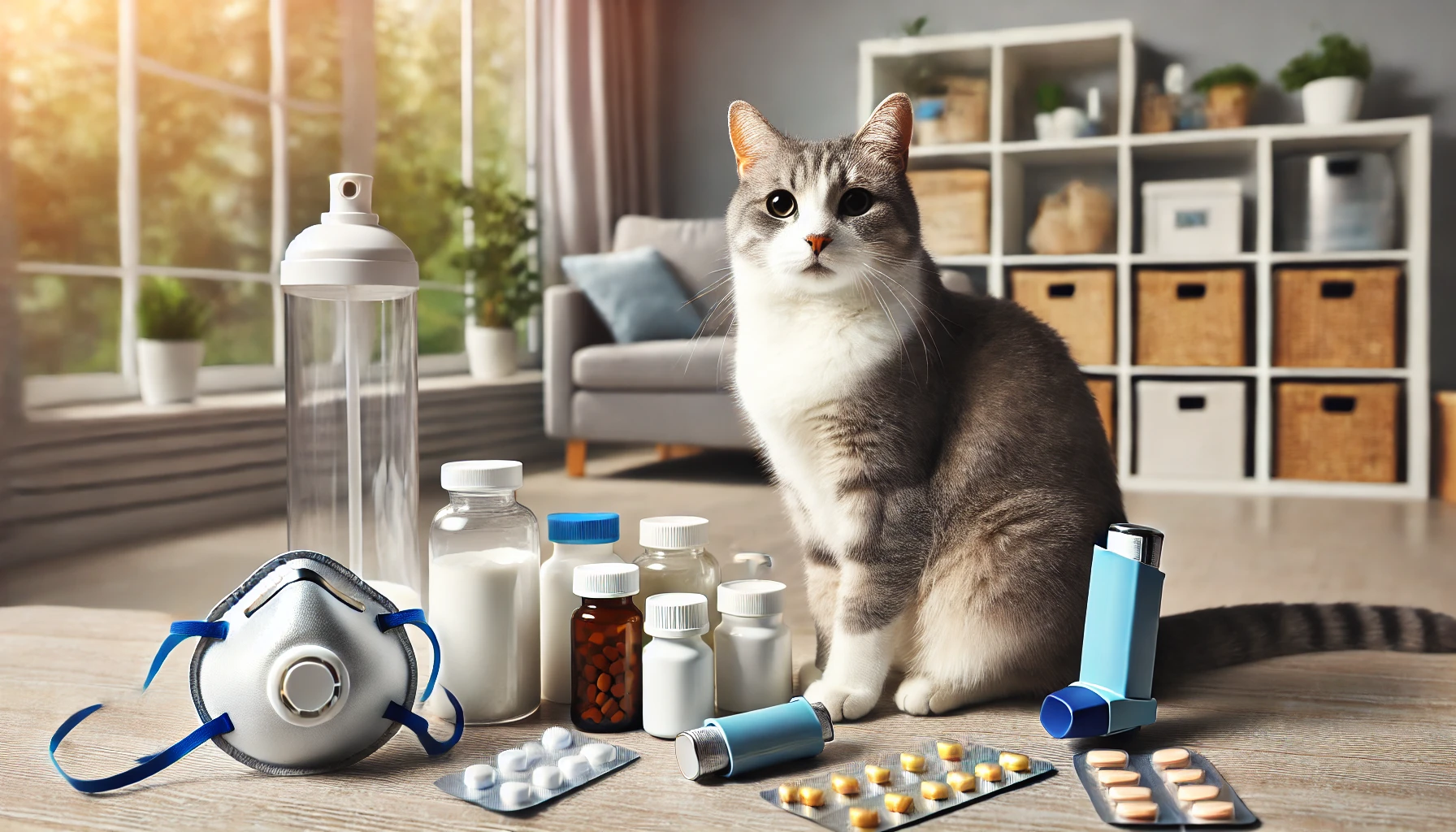
Key Takeaways for the Management of Feline Asthma
There are several important strategies to note when caring for a cat affected by feline asthma.
Below is a summary of the necessary approaches you can implement:
- Medication management: Corticosteroids and bronchodilators are two essential medications for treating asthma. Ensure your cat is on the right medication and dosage through inhalers, nebulizers, or other forms.
- Minimize environmental triggers: Asthma can be exacerbated by dust, pollen, mold, cigarette smoke, and household chemicals. Regular cleaning, using air purifiers, and minimizing the use of strong-scented products are essential steps to reduce irritants in your cat’s environment.
- Maintain air quality: Air purifiers, dehumidifiers, and unscented cat litter all contribute to cleaner air and can help prevent asthma attacks.
- Lifestyle changes: Keeping your cat at a healthy weight and maintaining a calm, predictable environment will minimize unnecessary asthma flare-ups.
- Monitoring symptoms: Keeping an accurate log of asthma episodes helps you and your veterinarian tailor treatments and stay ahead of potential flare-ups.
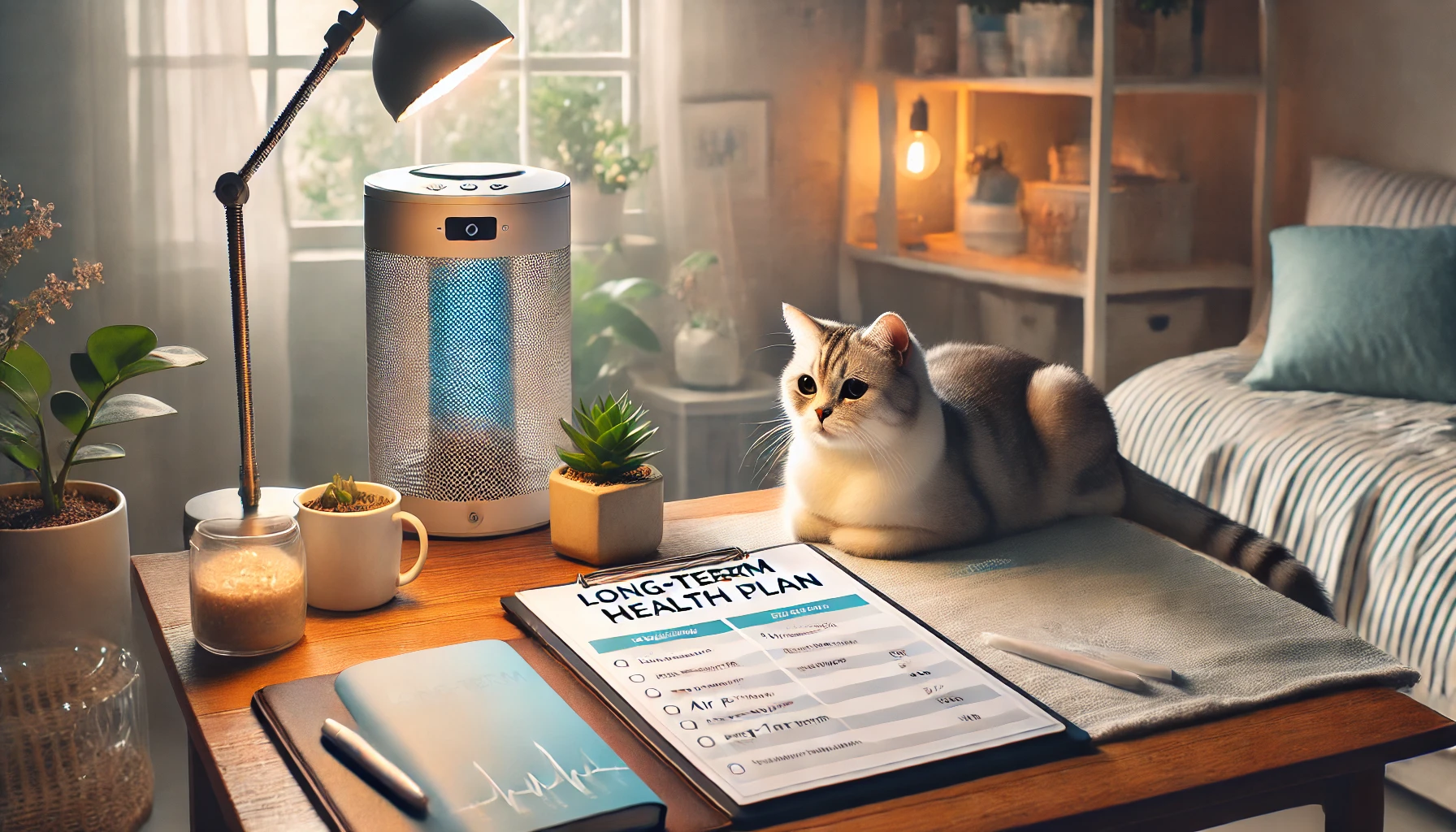
Building a Long-Term Plan for Your Cat’s Health
Building a long-term management plan with your veterinarian is crucial for helping your cat thrive despite feline asthma.
Regular check-ups and staying proactive with preventive measures will help keep your cat’s asthma under control.
Your plan should include:
- Routine veterinary visits to monitor your cat’s condition and adjust medications as needed.
- A regular cleaning schedule to minimize allergens in your home.
- Consistent monitoring of your cat for symptoms of asthma flare-ups.
- An emergency plan for acute asthma attacks, such as when to call your veterinarian immediately.

Final Thoughts
Living with a cat that has feline asthma can be challenging, but with the right mix of medication, lifestyle changes, and vigilance, the condition can be managed effectively.
Every cat is different, and what works for one may not work for another, so it’s essential to tailor the treatment plan to your cat’s specific needs.
By staying well-informed and taking proactive steps, you can help your feline companion enjoy a healthy, active life, free from frequent asthma attacks.
While feline asthma cannot be cured, it can be managed effectively. By following proper treatment plans, environmental adjustments, and monitoring, cats can live healthy and active lives despite the condition.

Commonly Asked Questions About Feline Asthma
Here are some of the common queries that pet owners have about feline asthma and how it is managed.
Understanding the condition better will help owners care for the feline member of the family.
What are the early signs of feline asthma?
The early signs of feline asthma include coughing, wheezing, and labored breathing.
Symptoms can be subtle in the early stages but will progress over time.
Contact your veterinarian for diagnosis and a treatment plan if you notice these signs.
Can feline asthma be cured?
No, feline asthma is not a curable disease.
However, it is a manageable condition with medication and lifestyle adjustments that allow your cat to live comfortably and avoid frequent asthma attacks.
What triggers asthma attacks in cats?
Common allergens responsible for feline asthma include dust, pollen, mold, cigarette smoke, and household chemicals.
Stress, cold air, and respiratory infections can also trigger asthma.
Reducing exposure to these irritants helps minimize flare-ups.
How is feline asthma diagnosed?
Diagnosis typically includes a physical examination, chest X-rays, and possibly a bronchoscopy.
Your veterinarian may also conduct tests to rule out other conditions with similar symptoms, such as pneumonia or heart disease.
What is the best course of treatment for asthma in cats?
The best treatment for feline asthma involves medications such as corticosteroids and bronchodilators.
These are often delivered by inhalers directly to the lungs, combined with lifestyle changes to minimize exposure to asthma triggers.
Can cats with asthma live normally?
Yes, cats with feline asthma can live a normal, active life if managed properly.
Consistent treatment, a trigger-free environment, and regular veterinary care ensure they maintain a good quality of life.
How often should I bring my asthmatic cat to the vet?
Cats with feline asthma should visit the vet at least every six months, or more often if symptoms worsen.
Regular check-ups help adjust medications and keep the condition under control.





